As the world becomes increasingly conscious of the impact of construction on the environment, developers are turning to innovative green building materials to create sustainable buildings. These materials are not only eco-friendly but also offer benefits like improved energy efficiency and indoor air quality.
Innovative green building materials are changing the construction industry and paving the way for a greener planet.
Key Takeaways
- Innovative green building materials offer solutions to environmental problems
- Green building materials can improve energy efficiency and indoor air quality in buildings
- Sustainable construction is crucial in creating a better future for the planet
Green building products have gained popularity in recent years due to their numerous benefits. These eco-friendly building materials are environmentally conscious alternatives to traditional construction materials that help reduce the carbon footprint of buildings and contribute to creating a more sustainable future.
The Sustainability Contribution
Using green building products is an easy way to contribute to a more sustainable future. The materials are manufactured with the environment in mind and often have a lower environmental impact than traditional building materials. Additionally, green building materials are often made from renewable resources, which reduces the strain on our planet’s natural resources.
Improved Indoor Air Quality
Traditional building materials and furnishings can release volatile organic compounds (VOCs) that can negatively affect indoor air quality. Green building materials are low in VOCs, which can help create a healthier indoor environment and better air quality. This is particularly important in homes and buildings where occupants spend a significant amount of time.
Energy Efficiency
Green building materials are designed to be energy-efficient and can help reduce energy usage in buildings. They often have superior insulation properties that help to maintain comfortable indoor temperatures while reducing the need for heating and cooling. This translates into lower energy bills and reduces the need for fossil fuels that contribute to climate change.

Reduced Environmental Impact
Environmentally friendly construction materials can significantly reduce the impact of construction on the environment. They are often produced using recycled materials, which reduces waste and conserves resources. Additionally, many green building materials have a longer lifespan than traditional materials, reducing the need for frequent replacements and waste associated with disposal.
Cost-Effective
While some green building products may have a higher initial cost, they can be cost-effective in the long run. For example, energy-efficient materials can help reduce energy costs, and long-lasting materials reduce replacements and maintenance costs. Additionally, some green building materials may have government incentives and tax credits, making them more affordable.
Overall, using eco-friendly building materials can benefit both the environment and building occupants. By incorporating these materials in construction projects, we can create a more sustainable future while improving the quality of our indoor and outdoor environments.
Types of Innovative Green Building Materials
As the demand for sustainable construction grows, innovative green building materials are becoming more widely available. These materials not only reduce environmental impact but also offer unique aesthetic and functional benefits to architects and builders alike.
Renewable Building Materials
Bamboo: As a rapidly renewable resource, bamboo is a popular eco-friendly building material due to its strength, durability, and versatility. It can be used in flooring, wall cladding, and even structural elements.
Reclaimed Wood: Salvaged from old buildings and structures, reclaimed wood provides a unique look while reducing waste. It is commonly used in flooring, furniture, and decorative elements.
Energy-Efficient Materials
Solar Panels: Solar panels are a popular option for powering buildings sustainably. They convert sunlight into electricity, reducing dependence on traditional power sources.
Insulation: Effective insulation is key to reducing energy consumption in buildings. Materials such as cellulose, aerogel, and recycled insulation offer low-impact options for improving energy efficiency.
Eco-Conscious Construction Materials
Rammed Earth: This ancient building technique uses compressed soil to create sturdy and sustainable structures. It is a low-carbon alternative to concrete and brick construction.
Mushroom Materials: Made from agricultural waste combined with mushroom mycelium, these materials are lightweight and biodegradable. They can be used in insulation, packaging, and even furniture.
Cork: Cork is a renewable and durable material that offers insulation and acoustic benefits. It is commonly used in flooring, wall tiles, and furniture.

Advancements in Sustainable Concrete
Concrete is one of the most commonly used building materials, but its production has significant environmental impacts. However, advancements in sustainable concrete have led to the creation of low-carbon building materials that reduce the environmental impact of construction.
One key advancement is the use of recycled materials, such as fly ash and slag, as substitutes for traditional cement. This reduces carbon emissions, as less energy is required to produce these materials compared to cement. Additionally, carbon capture technologies are being developed to capture emissions from concrete production and store them underground, further reducing the carbon footprint of this material.
Alternative cementitious materials, such as geopolymer concrete, are also being explored. These materials are made from industrial waste materials and have a lower carbon footprint than traditional Portland cement.
Innovation in sustainable concrete extends beyond reducing carbon emissions. Self-healing concrete, which uses bacteria or nanotechnology to fill in cracks, extends the lifespan of the building material, reducing the need for costly repairs and replacements.
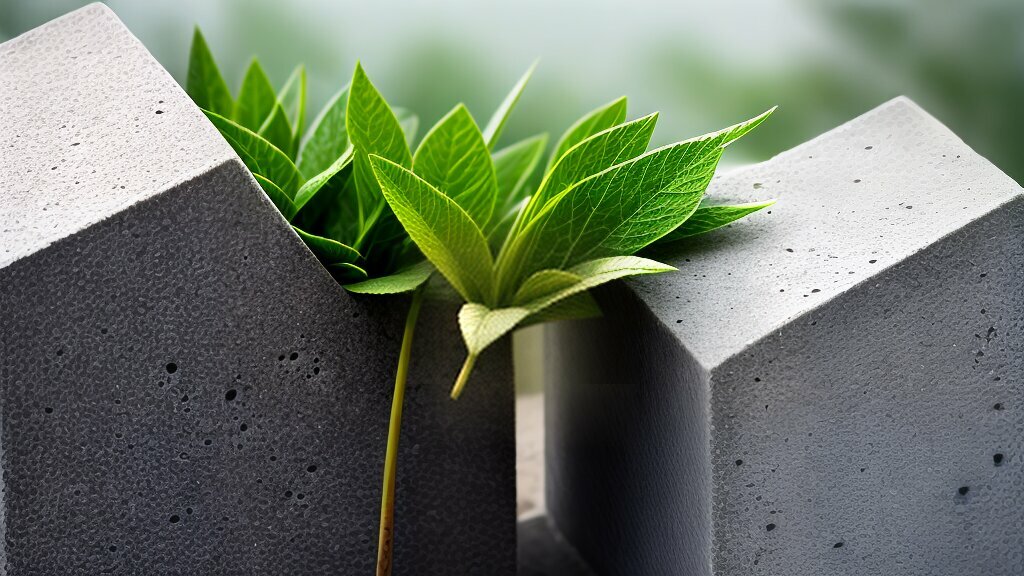
Innovations in Insulation Materials
Energy-efficient insulation materials play a crucial role in sustainable construction by minimizing heat gain or loss and reducing the need for artificial heating and cooling. In this section, we explore some of the latest innovations in green insulation materials.
One of the most sustainable insulation options is cellulose insulation, which is made from recycled paper and cardboard materials. This eco-friendly insulation material offers excellent thermal performance and soundproofing, making it ideal for use in walls, ceilings, and floors.
Another innovative insulation material is aerogel, which is a lightweight and highly porous substance that is up to 99.8% air. Despite its low density, aerogel provides excellent thermal insulation, making it a popular choice in industrial and commercial applications.
Recycled insulation materials like denim and cotton are also gaining popularity due to their eco-friendliness and high thermal performance. These materials offer a sustainable alternative to traditional insulation products and help to reduce landfill waste.
Image of Cellulose Insulation

“Green insulation materials not only provide thermal insulation but also help achieve eco-friendly construction and sustainability goals.”
Sustainable Flooring Options
When it comes to selecting flooring materials, there are many eco-friendly options available that are not only sustainable but also visually appealing. By using sustainable flooring options, you can reduce the environmental impact of your building project while creating a healthy indoor environment for its occupants.
Bamboo is an excellent renewable flooring material that is gaining popularity due to its durability, natural beauty, and sustainable sourcing. Bamboo grows rapidly and can be harvested every 3-5 years, making it a great alternative to traditional hardwoods. It also has a natural resistance to moisture and can withstand heavy foot traffic.
Cork is another eco-friendly flooring material that is harvested from the bark of cork oak trees. The bark regrows every 9 years, making cork a renewable and sustainable resource. Cork flooring is naturally resistant to mould, mildew, and insects, providing a healthy and hypoallergenic indoor environment.
Reclaimed wood is an environmentally conscious option that repurposes old wood from barns, factories, and other sources. By giving new life to old materials, reclaimed wood reduces the demand for virgin timber and prevents waste from ending up in landfills. It also gives a unique character to buildings with its weathered and rustic appearance.
Recycled tiles are another eco-conscious flooring option that can be made from a variety of materials such as glass, ceramic, and even rubber. These tiles are manufactured from post-consumer waste, reducing the amount of waste that would otherwise end up in landfills. They are also durable, easy to maintain, and come in a wide range of colours and styles.
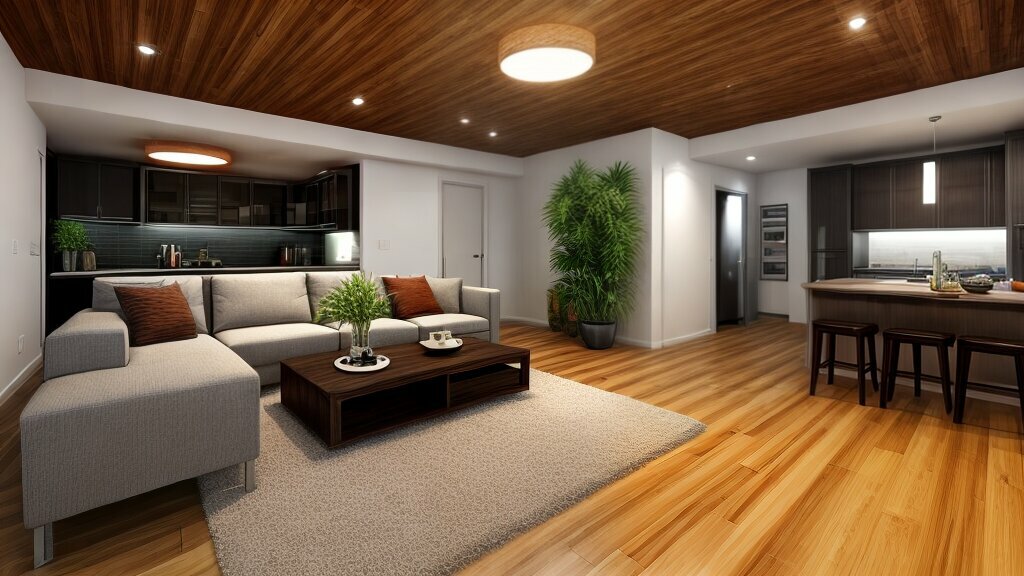
By choosing sustainable flooring options, you can create a stylish and eco-friendly interior that promotes a healthy and sustainable lifestyle. These materials not only reduce the environmental impact of your project but also contribute to the long-term sustainability of the planet.
Eco-Friendly Roofing Solutions
Roofing is a critical component in building energy efficiency, and eco-friendly roofing solutions are gaining popularity for their ability to reduce the carbon footprint of buildings.
Cool roofs are designed to reflect sunlight and heat, reducing the amount of energy needed to cool buildings. These roofs are typically made of materials that are highly reflective or have high thermal emittance. Green roofs, on the other hand, are covered with vegetation that absorbs heat and filters pollutants from the air. They also reduce the amount of stormwater runoff, which helps to alleviate pressure on urban drainage systems.
Solar roofing options are also becoming more prevalent, with the emergence of new technologies that enable solar panels to be incorporated into roofing materials. These roofs generate renewable energy and can significantly reduce energy costs over time.
Furthermore, there has been a growing interest in developing roofing materials that are made from recycled or renewable sources. For example, some companies are now producing roofing tiles made from recycled plastics or rubber, reducing waste and energy consumption in the production process.
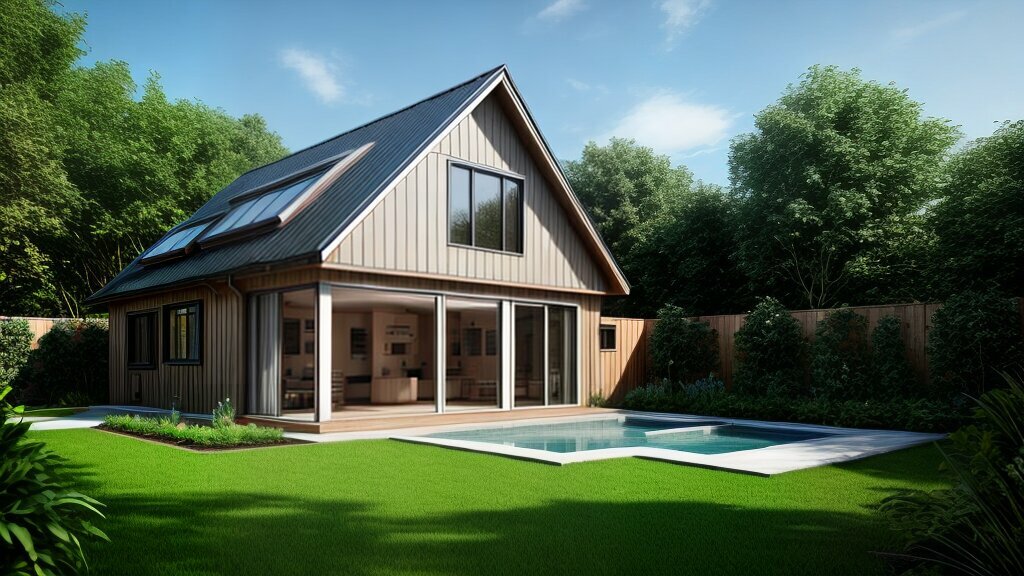
Ultimately, eco-friendly roofing solutions not only reduce the carbon footprint of buildings but also provide a range of additional benefits such as improved air quality, reduced energy costs, and increased insulation. As demand for sustainable construction increases, we can expect to see more innovative solutions in this area.
Sustainable Alternatives to Traditional Paints
Traditional paints contain volatile organic compounds (VOCs) that are harmful to the environment and human health. Fortunately, there are now sustainable alternatives to traditional paints that are low in VOCs and offer a range of benefits. These include natural paints, milk paints, and clay-based finishes.
Natural paints are made from renewable materials like clay, chalk, and plant oils. They have low levels of VOCs and are free from harmful chemicals. Milk paints are made from milk protein, lime, and natural pigments. They have been used for centuries and are biodegradable, durable, and easy to apply. Clay-based finishes are made from clay, sand, and natural pigments. They are breathable, moisture-resistant, and create a unique finish.
Using sustainable paints not only benefits the environment but also creates healthier indoor spaces. By reducing exposure to harmful chemicals, inhabitants of a building may experience fewer respiratory problems, headaches, and allergic reactions. Furthermore, by choosing sustainable paints, you are supporting the development of a market that has the potential to stimulate innovation and drive down costs.

Green building materials like sustainable paints are gaining traction in the construction industry as more people become aware of the environmental and health impacts of traditional building products. As the demand for sustainable construction grows, so does the innovation and development of new materials and technologies. In the next section, we will explore how smart technologies are being integrated into innovative green building materials.
Innovations in Green Building Materials: Integration of Smart Technologies
The integration of smart technologies is playing a pivotal role in the evolution of innovative green building materials, enabling buildings to operate with greater energy efficiency and sustainability. Smart sensors, automation, and energy management systems are being used in conjunction with eco-friendly materials to optimize the use of resources in buildings.
With the use of sensors, it is now possible to gather data on indoor air quality, temperature, and lighting, allowing building managers to make informed decisions on optimizing building performance. This leads to better energy efficiency, healthier living and working environments, and reduced operational costs.
The use of automation, such as smart lighting and HVAC systems, ensures that energy is used only when required, reducing energy consumption and minimizing waste. Energy management systems allow building owners to monitor and control energy usage in real-time, making it easier to identify areas of high consumption and take corrective action.
The integration of smart technologies with innovative green building materials is paving the way for a future where buildings are self-sufficient, generating their own renewable energy, monitoring themselves, and adapting to the needs of their occupants in real-time. The possibilities for eco-friendly design and construction are endless and exciting.

Case Studies: Exemplary Projects Using Green Building Materials
Real-life examples serve as excellent showcases for the benefits of using innovative green building materials. In this section, we take a closer look at some of the most impressive projects that have successfully incorporated eco-friendly materials.
One Central Park, Sydney, Australia
Award-winning One Central Park in Sydney is a stunning example of how green building materials can contribute to sustainable urban living. The building features lush vertical gardens, a wind turbine, and solar panels that generate enough energy to power 64% of the building’s common areas. The use of recycled water for irrigation and cooling systems, as well as materials like bamboo and recycled wood, adds to the building’s green credentials.
| Green Building Features |
Materials Used |
| Solar panels, wind turbine, and cogeneration plant |
Recycled wood, bamboo |
| Vertical gardens |
Recycled water |
Image source: 
The Edge, Amsterdam, Netherlands
The Edge in Amsterdam has been dubbed the ‘greenest office building in the world’ thanks to its innovative use of green building materials and smart technologies. The building features a unique ‘cradle-to-cradle’ philosophy, meaning that all materials used in construction can be recycled or reused. Solar panels, rainwater collection systems, and geothermal energy contribute to the building’s impressive energy efficiency.
| Green Building Features |
Materials Used |
| Solar panels, rainwater collection, and geothermal energy |
Recycled materials, including steel, concrete, and wood |
| Smart technologies, including a mobile app for employees |
Cradle-to-cradle philosophy |
Image source: 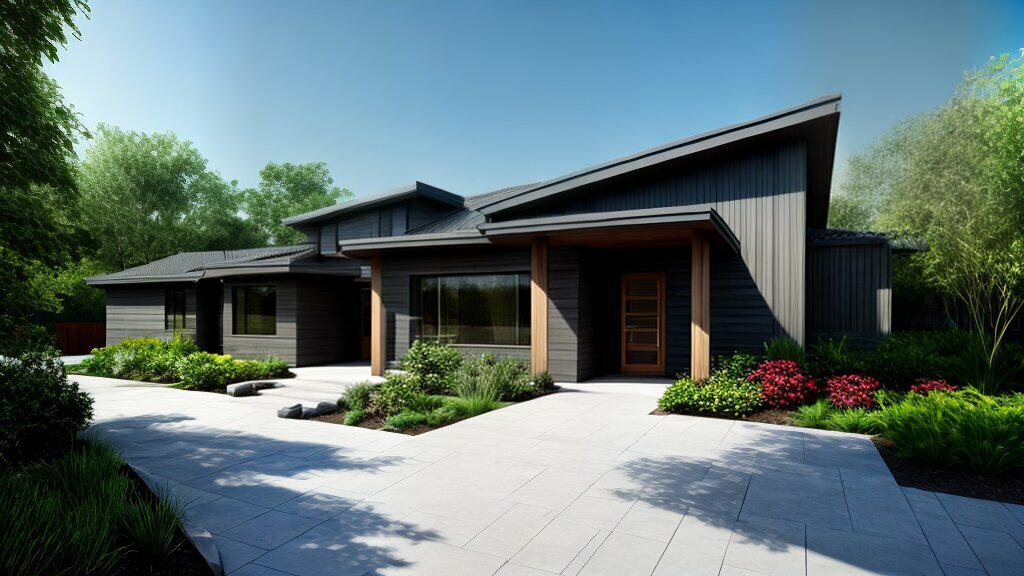
Bullitt Center, Seattle, USA
The Bullitt Center in Seattle is another example of an energy-efficient building that prioritizes sustainability. The building is designed to be self-sufficient, generating its own power and treating its own wastewater. Materials like reclaimed wood, FSC-certified lumber, and non-toxic paints and finishes were used in construction. The building also has a green roof and an innovative composting system.
| Green Building Features |
Materials Used |
| Solar panels and composting system |
Reclaimed wood, non-toxic paints, FSC-certified lumber |
| Green roof and rainwater harvesting |
N/A |
Image source: 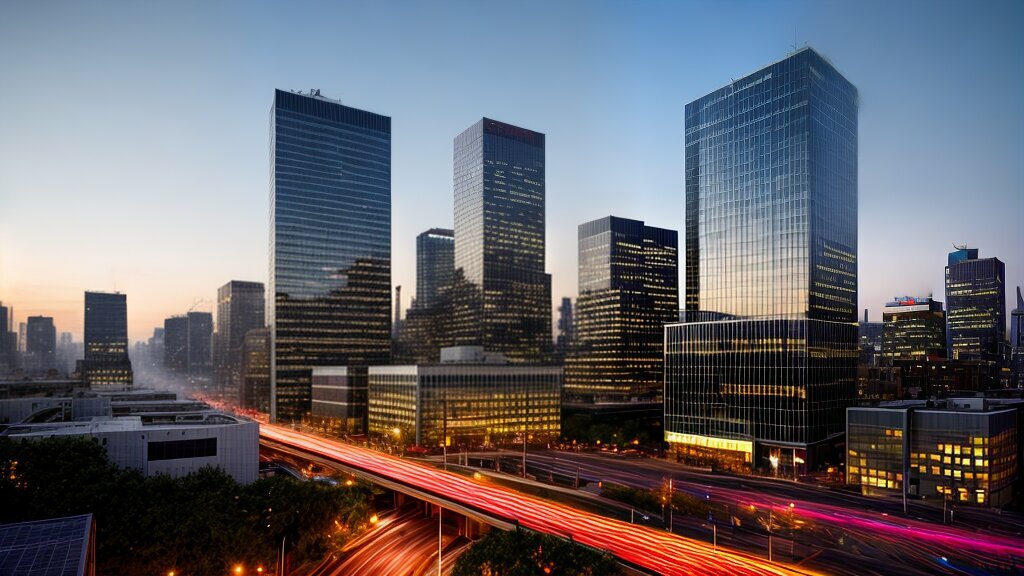
These projects demonstrate that sustainable construction is not just a pipe dream – it’s a reality. Incorporating green building materials into construction projects can have a significant impact on the environment and contribute to a more sustainable future.
Future Outlook: The Evolution of Green Building Materials
The adoption of innovative green building materials is expected to increase in the coming years as the construction industry aims to reduce its environmental impact. A major trend that is expected to shape the industry is the use of biodegradable and compostable materials that can be reused or decomposed at the end of their lifespan, reducing waste. Sustainable materials like mycelium composites and biomimetic materials inspired by natural organisms like bones and shells are already gaining recognition for their ability to reduce carbon emissions and create a circular economy.
Another emerging trend is the integration of nanotechnology in building materials, which could improve their mechanical properties and durability while reducing material use. Nanoparticles can be incorporated into cement, insulation, and coatings to make them stronger and more energy-efficient.
The role of regulations in driving the adoption of green building materials is also becoming more significant. Governments around the world are implementing building codes and standards that require the use of sustainable materials and practices, pushing the industry towards greater environmental responsibility.
The future of green building materials is both exciting and promising. With continued research and development, the industry can move towards a more sustainable and eco-friendly future.
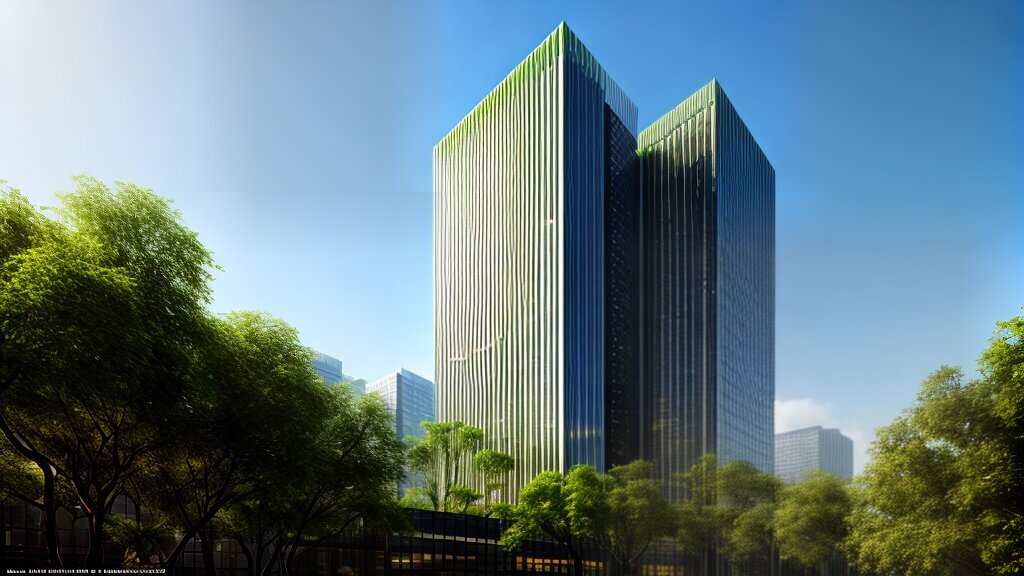
Conclusion
The use of innovative green building materials is crucial in promoting sustainable construction and creating a greener planet. From renewable materials like bamboo and cork to energy-efficient options such as solar panels and insulation, there are a variety of eco-friendly building products that can contribute to sustainability and reduce environmental impact.
Advancements in sustainable concrete, insulation materials, flooring options, roofing solutions, and low-VOC paints have made eco-conscious construction materials more accessible and effective than ever before.
The integration of smart technologies with green building materials also has the potential to further optimize resource efficiency in buildings.
Looking Forward
As the construction industry continues to prioritize sustainability, we can expect to see advancements in the development and application of innovative green building materials. Research into potential new options, such as biodegradable materials and circular design principles, will likely drive future progress and evolution in the industry.
Policies and regulations, as well as growing consumer demand for sustainability, will also play a role in shaping the adoption of eco-friendly building products.
Ultimately, the use of innovative green building materials will contribute to a more sustainable and environmentally conscious future.
FAQ
Q: What are innovative green building materials?
A: Innovative green building materials are eco-friendly construction materials that are designed to reduce environmental impact and promote sustainability. They are revolutionizing the way buildings are designed and constructed, paving the way for a greener planet.
Q: What are the benefits of using green building materials?
A: Green building materials offer numerous benefits. They contribute to sustainability, reduce environmental impact, improve indoor air quality, and promote energy efficiency in buildings. By using these materials, we can create healthier and more sustainable living and working spaces.
Q: What types of innovative green building materials are available?
A: There are various types of innovative green building materials available. These include renewable materials such as bamboo and reclaimed wood, as well as energy-efficient materials like solar panels and insulation. These materials offer sustainable alternatives to traditional construction materials.
Q: How is sustainable concrete advancing?
A: Sustainable concrete is advancing through the use of recycled materials, carbon capture technologies, and alternative cementitious materials. These advancements aim to reduce the carbon footprint of concrete production and make it a more eco-friendly building material.
Q: What are the latest innovations in insulation materials?
A: The latest innovations in insulation materials include options like cellulose, aerogel, and recycled insulation. These materials help in reducing energy consumption and improving thermal efficiency in buildings, leading to energy savings and decreased environmental impact.
Q: What are some sustainable flooring options?
A: Sustainable flooring options include materials like bamboo, cork, reclaimed wood, and recycled tiles. These materials are not only visually appealing but also environmentally friendly, making them a desirable choice for eco-conscious construction projects.
Q: What are eco-friendly roofing solutions?
A: Eco-friendly roofing solutions include cool roofs, green roofs, and solar roofing options. These solutions contribute to energy efficiency, reduce the carbon footprint of buildings, and provide additional benefits like improved insulation and rainwater management.
Q: What are some sustainable alternatives to traditional paints?
A: Sustainable alternatives to traditional paints include low VOC (volatile organic compounds) options like natural paints, milk paints, and clay-based finishes. These alternatives help in reducing indoor air pollution and creating healthier living environments.
Q: How are smart technologies integrated into green building materials?
A: Smart technologies are integrated into green building materials through the use of sensors, automation, and energy management systems. These technologies optimize resource efficiency in buildings, leading to reduced energy consumption and improved sustainability.
Q: Can you provide examples of exemplary projects using green building materials?
A: Yes, there are numerous exemplary projects that have successfully incorporated green building materials. These projects showcase the positive impact of using sustainable construction materials on the environment and provide inspiration for future sustainable construction projects.
Q: What is the future outlook for green building materials?
A: The future outlook for green building materials is promising. Advancements in research, technology, and regulations are shaping the industry towards greater sustainability. The adoption of innovative sustainable materials is expected to continue to grow in the coming years.
Q: What is the conclusion of this article?
A: In conclusion, innovative green building materials play a crucial role in creating a more sustainable construction industry. By using these materials, we can reduce environmental impact, improve energy efficiency, and create healthier living and working spaces. The future of construction lies in embracing these sustainable materials and technologies.
You may also like:
The Role of Biophilic Design in Enhancing Sustainability in Construction
Advancements in Solar Integration for Sustainable Building Energy Systems






























Post comments (1)